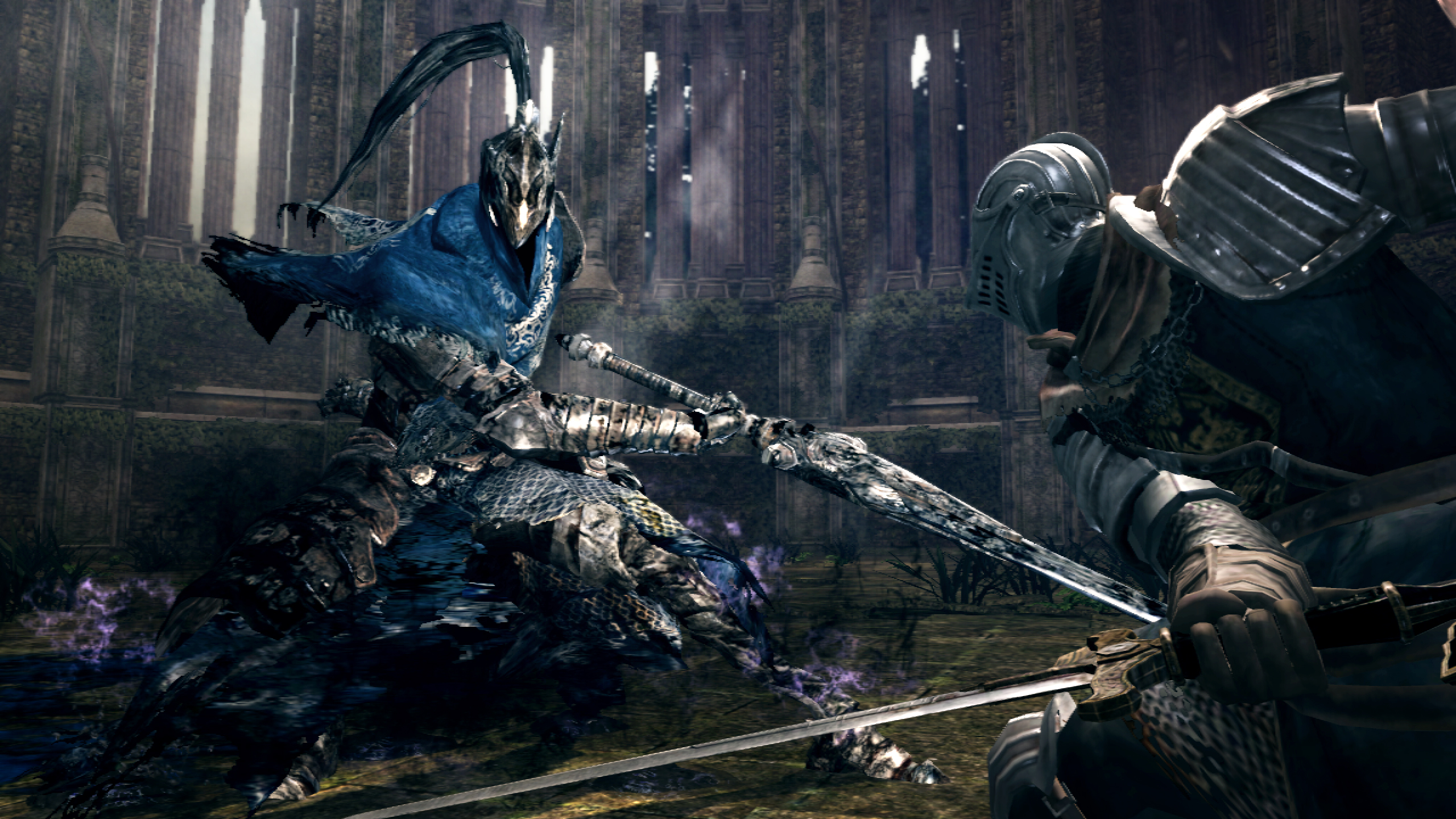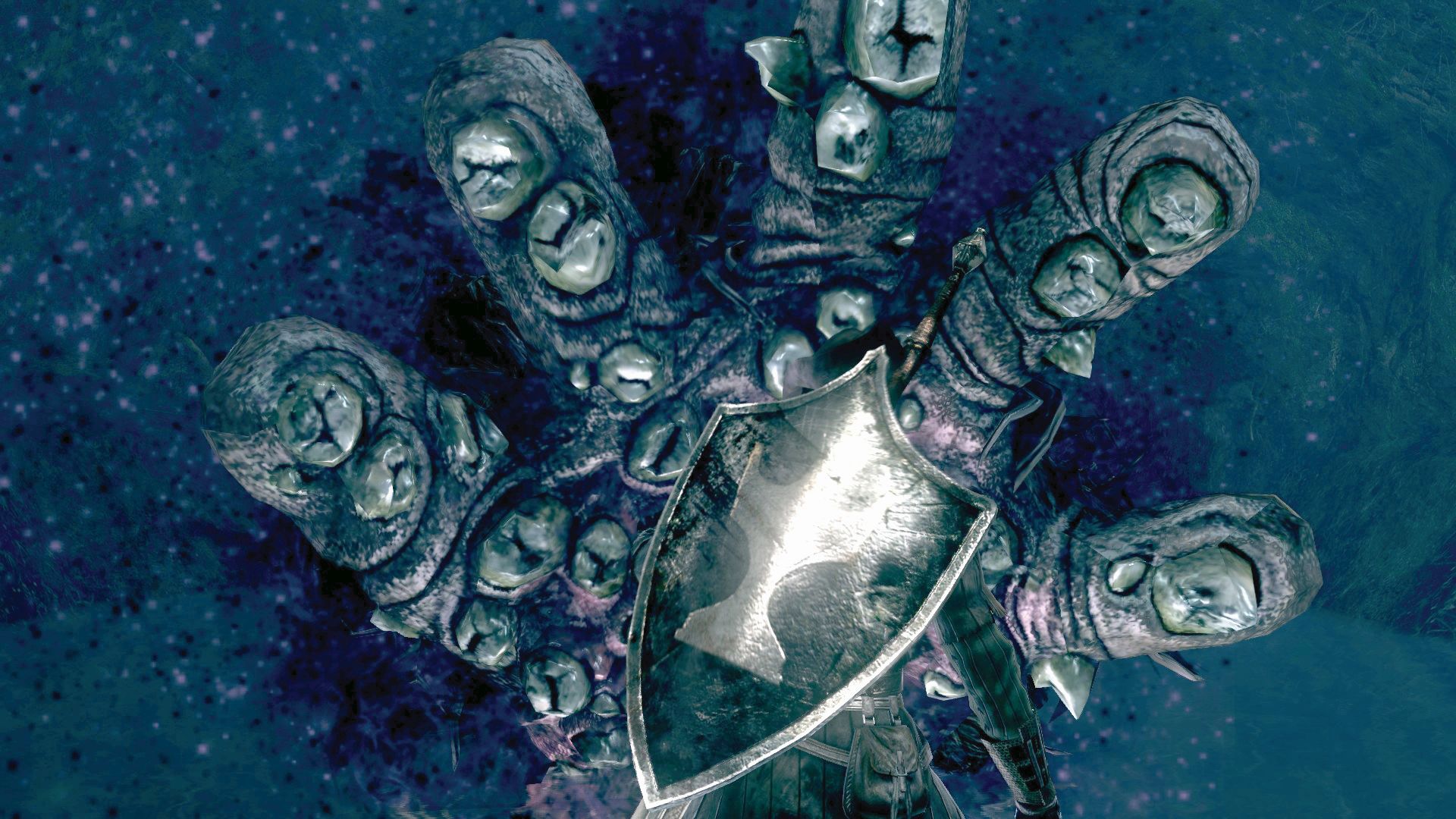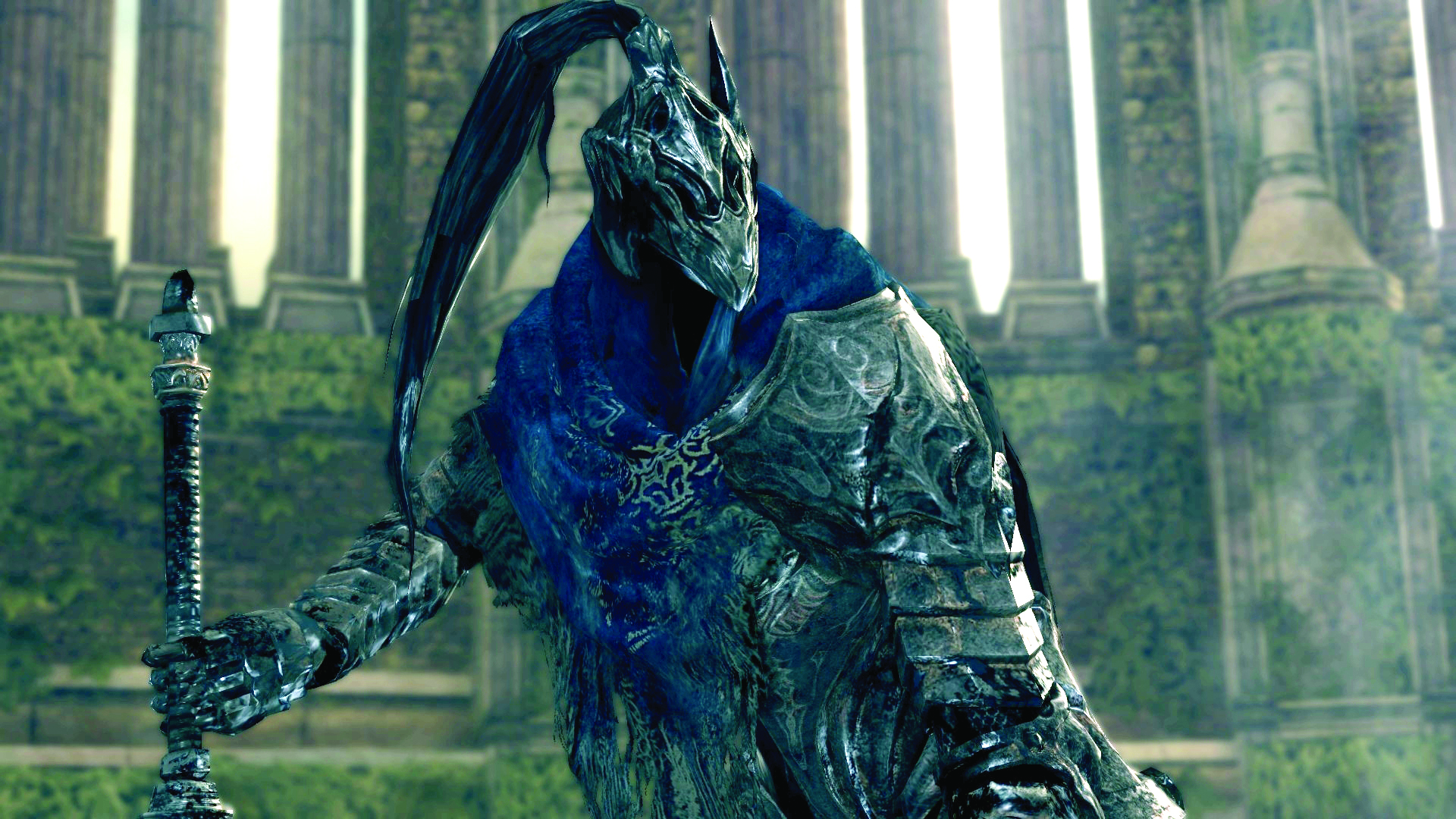Dark Souls and the tragedy of Knight Artorias
A tale of friendship and doomed loyalty.

This is the first in a five-part celebration of Dark Souls published in PC Gamer UK issue 331. For more quality articles about all things PC gaming, you can subscribe now in the UK and the US. Spoilers ahead for major Dark Souls bosses.
Dark Souls bosses are a beautiful marriage of fiction and encounter design. By the time you find Knight Artorias in Dark Souls’ expansion his background has already been well established in item descriptions and scraps of conversation. You know he’s one of Lord Gwyn’s four most trusted knights. He’s an unparalleled master of the greatsword. He is known as the “Abysswalker”. Gradually you piece together the story of a loyal warrior doomed by his own unwavering determination and sense of duty. It’s also a sad story about a man and his dog.
There’s a chance you’ve already seen Artorias in cover art or imagery surrounding Dark Souls. It’s a strong look. He hunches over and balances his greatsword across his stooped shoulders. His face is lost in a blue hood. His shattered left arm hangs limply at his side. For Dark Souls players Artorias isn’t just another cool knight. He’s a legend, credited with destroying the corruption that threatened to overcome the land, or so it seems.
When you eventually find him in Dark Souls’ expansion, set before the main game, he is weakened, dripping with corruption, and still fighting ferociously after years spent lost in darkness.
He makes a powerful entrance, dropping down to spear a corrupted human—proof that on some level he’s still trying to complete his mission. Then the dark ooze of the Abyss starts dripping from his hood, he roars, and you realise that he’s gone. In a cheery fantasy novel, Artorias might be the hero of the story. In Dark Souls you have to put him out of his misery.

Somehow FromSoftware’s animators are able to express Artorias’ torment, even as he’s destroying you with brutal overhead sword strikes.
Even weakened, with only one working arm, Artorias is a deadly fighter. He lunges and swipes with sudden movements, leaving trails of black ooze behind him. Occasionally he stops and, for a moment, seems deeply, existentially exhausted. Then a bubbling surge of Abyssal energy consumes him and, with a scream, he throws himself back into the fight.
Somehow FromSoftware’s animators are able to express Artorias’ torment, even as he’s destroying you with brutal overhead sword strikes. Even his broken arm has story significance. By piecing together discrete scraps of lore you know one of his last acts before being consumed by the abyss. He sacrificed his greatshield to protect his loyal companion the Great Wolf Sif. You suspect that, without it, a blow could have ruined Artorias’ arm.
The biggest gaming news, reviews and hardware deals
Keep up to date with the most important stories and the best deals, as picked by the PC Gamer team.
The Sif fight is one of the saddest encounters in Dark Souls. Rumours suggested that if you took Sif down to a sliver of health it would limp away and survive. It’s not true. Sif defends its friend’s grave to the end. When you loot the tombstone you find Artorias’ ring, which grants access to the Abyss. You can speculate that Sif wasn’t just guarding the memory of Artorias, but trying to prevent future heroes from sharing his fate.
If you play the expansion before you meet the huge Great Wolf version of Sif, you can find it as a pup in the Abyss, and free it from Artorias’ shield. If you do this the introductory cutscene for Sif changes. The wolf sniffs, recognises you, bows in sorrow, and then howls at the moon when it realises it has to fight the warrior that once saved them.

In most games boss fights are a matter of pacing and challenge. In Dark Souls they are vital story beats that evoke powerful, layered emotions. Beneath the anger, frustration, fear and satisfaction of navigating combat, the fights with Artorias and Sif are deeply sad. The Sif fight is tragic because you are forced to punish the wolf’s eternal loyalty to their dead companion. The Artorias fight is tragic because you’re witnessing the corruption of a legend. But, while the game can feel relentlessly grim at times, there is a glimmer of light in the darkness.
When you defeat Artorias, you collect his soul. “The Legend that Artorias repelled the Abyss only told half of the story,” says the description. “It seems that he was defeated, and his honor preserved, by some unsung hero, who is the true victor over the Abyss.”
Cost of the quest
As the unsung hero, you manage to complete Artorias’ quest and preserve his legacy. In this moment you realise that your fate has been entwined with Artorias and Sif from the start of the game. Every fight is part of a grand time loop that allows you to complete your fight against Lord Gwyn and choose whether or not to end the age of fire.
There are deeper layers to the story that you only find discussed on the most obsessive Dark Souls lore messageboards, suggesting that Artorias was tricked by one of the enigmatic Primordial Serpents plotting to bring down Lord Gwynn. It’s a testament to Dark Souls’ powerful storytelling that a couple of bosses can invite so much discussion even years after the game’s launch. When you look at the game as a whole his story is just one thread in a huge tapestry, but it shows how Dark Souls breaks ground and elevates the idea of what a videogame enemy can mean to a player. After battling Knight Artorias, bosses in other games seem thin.
Part of the UK team, Tom was with PC Gamer at the very beginning of the website's launch—first as a news writer, and then as online editor until his departure in 2020. His specialties are strategy games, action RPGs, hack ‘n slash games, digital card games… basically anything that he can fit on a hard drive. His final boss form is Deckard Cain.


